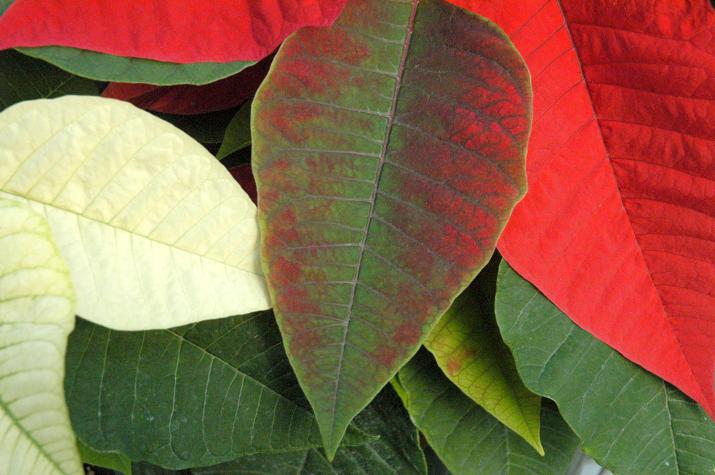COLUMBIA, Mo. – Every year Americans buy millions of poinsettias. But what do you do with all those plants after the holidays? Many people just throw them away, but there’s always those who wonder if they can be re-bloomed for next year.
“It is quite a bit of work. However, it is a real botanical or horticultural challenge, and I would encourage everyone to accept the challenge at least one time,” said David Trinklein, horticulture specialist for University of Missouri Extension.
Be aware that this is a yearlong, labor-intensive process.
“After Christmas, keep the poinsettia well-watered and fertilized in a brightly lit window,” Trinklein said. “Then when the weather warms to the point that a tropical plant can safely be put outside, place it in a sunny area and keep it well-watered and fed all summer long.”
In September the important work begins, Trinklein says. Around Labor Day, prune back the poinsettia severely. Since it’s grown all summer, it could be 20-30 inches tall. Pruning will make the plant shorter and activate axillary buds, which will make it bushier and more attractive.
Once the plant responds to pruning, it’s ready to be coaxed into its reproductive state. Poinsettia belongs to a class of plants known as short-day plants. They respond reproductively to the short days and long nights of fall.
“For the Midwest the magic day is Sept. 25. That’s the date that triggers poinsettia to shift from what was a vegetative to a reproductive mode,” Trinklein said.
To subject the plant to the short days and long nights it would experience in nature, put it into a completely dark closet or room at sunset. Then take it out again at sunrise the following morning, Trinklein said. This must be done day after day after day for six to eight weeks, or until color begins to appear.
Poinsettias must have these long, uninterrupted periods of total darkness. This is where the diligence comes in. If you miss the schedule just one day or alter the conditions even slightly, the plant will “think” it’s summer and the re-blooming process will be delayed, Trinklein said.
Don’t make the mistake of leaving it in total darkness for several weeks.
“We often get calls from people, ‘I put my poinsettia in the closet last September, like you told me, and I took it out today and it’s dead.’ You have to give it sun and let it feed. It’s a plant, not a hibernating bear.”
After weeks of hard work, one glorious day the bracts—the colorful, modified leaves that we desire—will begin to change color. Once the color appears the into-the-closet, out-of-the-closet routine can stop.
But prepare yourself. The results may be disappointing.
“Because our homes are much warmer, especially in the evening, than commercial greenhouses, and even the best of light in a home is dimmer than good greenhouse light, poinsettias that are re-bloomed tend to be rather tall and stretchy,” Trinklein said.
While it’s a fussy, exacting process that doesn’t yield great results, those who try should be commended for their effort, he says.
More information about poinsettia care is available in the MU Extension guide “Care of Flowering Potted Plants: Poinsettia” (G6511).
Writer: Debbie Johnson
